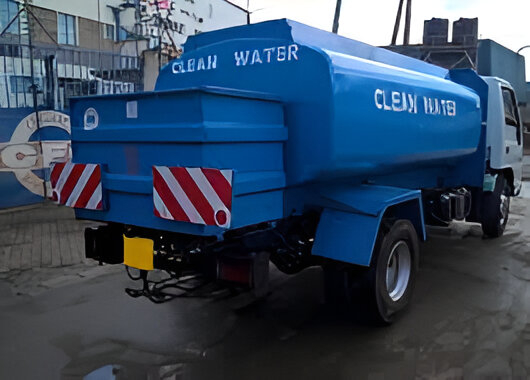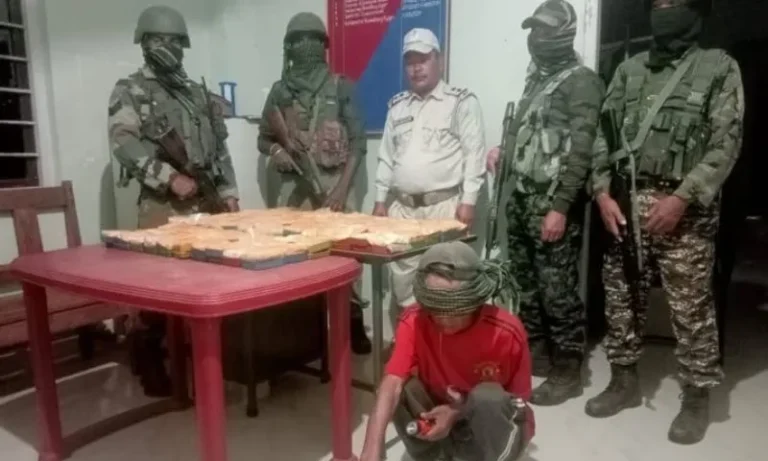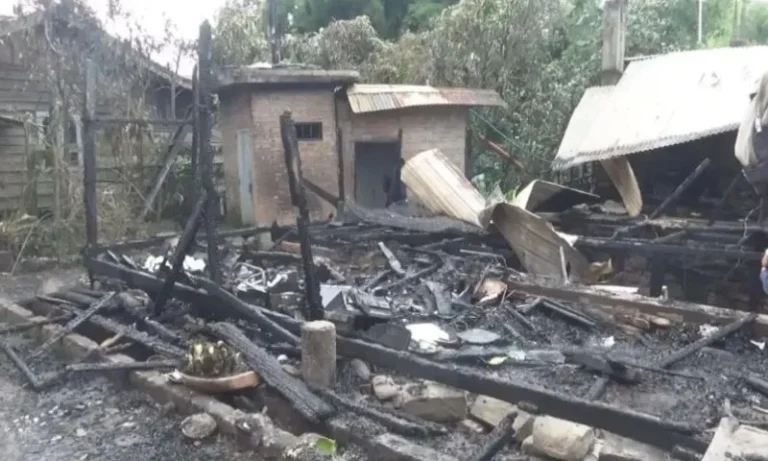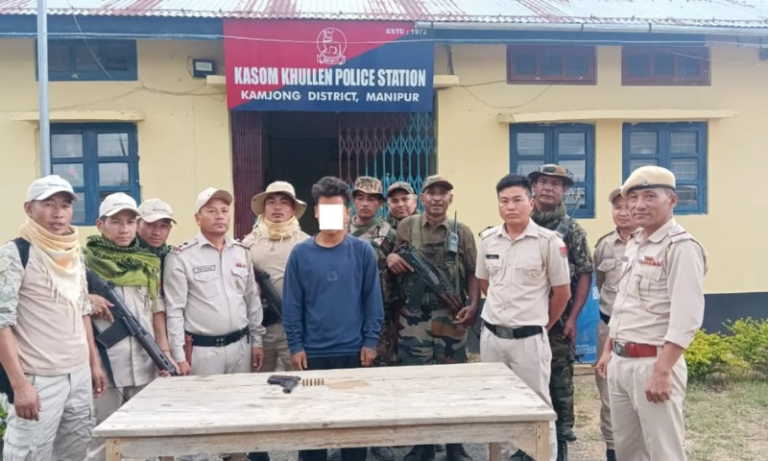Manipur Hijacked Water Tanker Recovered After 13-Month Search: A Turning Point in Regional Security
Summary of the News Article
On February 1, 2024, a water tanker en route to supply essential water to state police commandos in Moreh, Manipur, was hijacked by suspected insurgents near the Kondong Lairembi area. After a grueling 13-month search operation across challenging terrain and amidst escalating regional tensions, authorities finally recovered the tanker on March 3, 2025, in Haolengphai—a Kuki village near the porous India-Myanmar border. The tanker, marked by multiple bullet holes, stands as a stark reminder of the persistent security challenges and complex ethnic dynamics in Manipur.
Long Article: Unraveling the Story Behind the 13-Month Search and Recovery of the Hijacked Water Tanker in Manipur
Introduction
Have you ever experienced that moment when a long-forgotten mystery finally unravels, bringing both relief and a cascade of new questions? That’s precisely the scenario playing out in Manipur after the recovery of a hijacked water tanker that vanished for over a year. Imagine the tension of waiting day after day for news on something so critical, only for it to resurface with a trail of bullet holes as silent evidence of past violence. In this comprehensive article, we’ll dive deep into what happened, why it matters, and what it means for regional security and community trust in Manipur.
Setting the Scene: The Importance of a Water Tanker
Water isn’t just a necessity—it’s life. In areas where essential services can be disrupted by conflict, a water tanker is more than just a vehicle; it’s a lifeline. In Moreh, a key town in Manipur known for its strategic location near the India-Myanmar border, water supply is critical not only for everyday life but also for the operational readiness of state police commandos tasked with maintaining security in a volatile region.
Now, imagine this vital resource being hijacked. That’s exactly what happened on February 1, 2024, when a water tanker, driven by a local Manipuri Muslim, was intercepted by suspected insurgents near Kondong Lairembi. The attack wasn’t just an act of defiance; it was a direct challenge to state authority, aimed at disrupting a crucial supply line.
The Hijacking Incident: A Moment of Crisis
On that fateful day, the tanker was on its way to Moreh to deliver water to commandos stationed there—troops who play a critical role in a region riddled with ethnic tensions and insurgency. The ambush was sudden and violent. Armed militants, believed to be linked with insurgent groups, intercepted the vehicle at gunpoint. The driver was assaulted, and the tanker was commandeered amid a cloud of fear and chaos. Multiple bullet holes later, the tanker became a symbol of the ruthless tactics employed by insurgents to assert their power and challenge the state’s control.
This isn’t just a story about a hijacked vehicle—it’s a narrative that underscores the very real challenges faced by security forces in Manipur. The incident raised serious questions about the vulnerability of supply chains and the extent to which insurgent groups could disrupt daily life and security operations.
The 13-Month Search: An Odyssey Through Turbulence
Following the hijacking, state authorities launched an extensive search operation that spanned 13 long months. Picture an epic treasure hunt, but instead of searching for gold, security forces were on a relentless quest to locate a water tanker marked by the scars of violence. The search was far from straightforward. Manipur’s rugged terrain, combined with the active presence of insurgent groups, created a labyrinthine challenge for the security teams.
For over a year, the tanker’s whereabouts remained a mystery. The operation faced numerous setbacks—each day brought hope and despair in equal measure. Navigating dense forests, treacherous roads, and politically sensitive areas, the search teams had to contend not only with the physical obstacles of the terrain but also with the murky undercurrents of local politics and ethnic tensions.
It wasn’t just about finding a vehicle; it was about restoring a sense of security and order in a region that had long been plagued by uncertainty. The prolonged disappearance of the tanker became emblematic of the broader challenges faced by Manipur’s security forces, highlighting the intricate web of insurgency, local loyalties, and cross-border complexities.
The Recovery: A Mix of Relief and New Questions
Finally, on March 3, 2025, the search reached its climax when the tanker was located in Haolengphai, a small Kuki village near the India-Myanmar border. The recovery of the tanker, now abandoned and riddled with bullet holes, brought immense relief to state authorities. It was as if a missing puzzle piece had been found after a long, arduous search—one that could help piece together the bigger picture of insurgency and local unrest.
However, the recovery also raised new questions. Why was the tanker hidden in Haolengphai? What does its state tell us about the operational tactics of insurgent groups in the area? And perhaps most importantly, how will this incident affect the already fragile relationship between different ethnic communities in Manipur?
Implications for Regional Security
The hijacking and subsequent recovery of the water tanker are not isolated incidents. They serve as a microcosm of the broader security challenges that Manipur faces on a daily basis. The region’s proximity to the porous India-Myanmar border makes it a hotspot for cross-border insurgent activities. Insurgent groups have long exploited these vulnerabilities, using their local knowledge of the terrain and community networks to evade detection and disrupt state operations.
This incident highlights the critical need for enhanced border security and more robust counter-insurgency measures. The fact that a vital supply line could be compromised for 13 months underscores the gaps in intelligence and coordination among security forces. It’s a wake-up call that prompts us to ask: How can we better protect essential services and ensure that vital resources like water reach those who need them, even in the face of adversity?
The Role of Insurgent Groups: Tactics and Objectives
To truly understand the gravity of the situation, it’s important to consider the tactics and objectives of the insurgent groups involved. In Manipur, insurgency has deep roots, often intertwined with ethnic and political dynamics. These groups are not merely fighting for power; they are challenging the very legitimacy of state authority by disrupting everyday life.
Hijackings, extortion, and attacks on supply lines are common strategies employed by insurgents. By targeting a water tanker—a resource essential for both civilians and security personnel—they send a powerful message: no one is safe, and state authority can be undermined. The bullet-riddled tanker recovered from Haolengphai stands as a tangible reminder of the violence and disruption that these groups are capable of inflicting.
It’s a bit like a game of chess, where each move is calculated to destabilize the opponent’s position. In this case, the insurgents’ move was aimed at disrupting the smooth operation of the state’s security apparatus, thereby sowing seeds of mistrust and chaos among the populace.
Ethnic Tensions and Community Dynamics
Manipur is a melting pot of various ethnic communities, each with its own cultural identity, history, and aspirations. However, this diversity also comes with its own set of challenges. The hijacking incident has further highlighted the existing fissures among communities. For instance, directives from radical village volunteers in Tengnoupal district—prohibiting the sale of essential supplies like water to state police commandos—point to deep-seated mistrust and animosity.
The recovery of the tanker in a Kuki village adds another layer to this complex tapestry. While the vehicle itself is a symbol of insurgency and state vulnerability, its location raises concerns about potential further polarization. Could this incident deepen existing rifts between the Kuki and Meitei communities? How can local leaders bridge these divides to foster an environment of cooperation and mutual understanding?
These are questions that extend beyond the immediate recovery of a hijacked vehicle. They touch upon the fundamental need for dialogue and reconciliation in a region where historical grievances continue to influence contemporary politics.
Impact on Civilians: Beyond the Headlines
While much of the discussion around the tanker recovery centers on security and insurgency, it’s crucial to remember the human element. For the people of Manipur, incidents like these have far-reaching consequences. Disruptions in essential services, such as water supply, directly affect daily life, health, and well-being.
Imagine living in a community where the basic necessity of water is constantly at risk. The psychological impact of such uncertainty can be profound, leading to feelings of vulnerability and mistrust toward authorities. In times of crisis, civilians often bear the brunt of the conflict, facing hardships that extend well beyond the immediate effects of a hijacking.
For the residents of Moreh and surrounding areas, the recovery of the tanker is a small victory—a sign that the state is working to restore normalcy. However, it also serves as a stark reminder of the challenges that lie ahead in ensuring that such essential services are protected from future disruptions.
The Search Operation: A Testament to Persistence
The 13-month search for the hijacked water tanker was an operation marked by persistence, strategic planning, and unwavering determination. Security forces had to navigate a complex landscape that included not only the physical challenges of rugged terrain but also the intricate web of local politics and insurgency.
Every day of that prolonged search was a reminder of the difficulties faced by those tasked with maintaining law and order in conflict zones. The operation required collaboration between different agencies, meticulous intelligence gathering, and, above all, a steadfast commitment to restoring public trust.
In many ways, the search itself became a symbol of resilience—a testament to the fact that even in the most challenging circumstances, authorities do not give up. It’s like searching for a missing piece of a puzzle that, once found, completes the picture of security and hope for the community.
Strengthening Security Measures: Lessons Learned
What can we take away from this incident to ensure that similar challenges are mitigated in the future? First and foremost, it highlights the urgent need to strengthen security measures, particularly in border areas and conflict-prone regions. Enhanced intelligence capabilities, better coordination among security agencies, and specialized training in counter-insurgency tactics are all critical steps that need to be taken.
Additionally, securing supply lines—especially those carrying essential resources like water—must be a top priority. This involves not only physical security measures but also building a robust network of community informants and local partnerships. When citizens are involved and invested in their own security, they can provide valuable insights that help preempt and neutralize potential threats.
Political and Administrative Reforms
While bolstering security forces is crucial, addressing the root causes of such incidents requires political and administrative reforms as well. Manipur’s complex socio-political landscape, marked by ethnic tensions and historical grievances, necessitates a multi-faceted approach. This includes fostering greater transparency, accountability, and dialogue between the state and its diverse communities.
Imagine if every community had a seat at the table—a scenario where policy decisions are made inclusively. Such an approach could help reduce feelings of alienation and mistrust, paving the way for more cohesive governance. Political leaders and local administrators must work together to ensure that policies are not only effective in the short term but also sustainable and inclusive in the long run.
Cross-Border Cooperation: A Regional Imperative
Another critical aspect highlighted by the recovery of the water tanker is the need for enhanced cross-border cooperation. Manipur’s proximity to the India-Myanmar border means that regional security cannot be viewed in isolation. Insurgent groups often exploit the porous nature of the border to move freely, making it imperative for both countries to work in tandem.
Joint operations, intelligence-sharing, and coordinated border patrols can go a long way in curbing cross-border insurgency. Such measures not only protect vital resources but also contribute to a broader atmosphere of stability and trust in the region. After all, security is a collective responsibility that transcends national boundaries.
Community Engagement and Trust-Building
Ultimately, the success of any security or political reform hinges on the support of the local community. In Manipur, building trust between state authorities and citizens is paramount. Initiatives such as community policing, regular public forums, and transparent communication channels can help bridge the gap between the government and the people.
When communities feel heard and valued, they are more likely to cooperate with authorities, provide crucial intelligence, and work together towards a common goal—peace and stability. The recovery of the hijacked tanker, while a victory for security forces, should also serve as a catalyst for renewed efforts in community engagement and trust-building.
Looking Ahead: The Road to Recovery and Reform
As we reflect on the long and arduous journey to recover the hijacked water tanker, it becomes clear that this incident is much more than a singular event. It is a reflection of the broader challenges faced by Manipur—a region striving to balance tradition and modernity, security and freedom, unity and diversity.
The road ahead is undoubtedly fraught with challenges. However, each setback presents an opportunity for growth and reform. By learning from this incident, strengthening security measures, and fostering inclusive governance, Manipur can pave the way for a future where essential services are protected, communities are united, and the rule of law prevails.
In a sense, the recovery of the water tanker is not the end but rather a new beginning—a starting point for deeper introspection, renewed dialogue, and sustained efforts to create a safer, more resilient Manipur.
Conclusion
The saga of the hijacked water tanker in Manipur, from its violent abduction to its eventual recovery after 13 long months, is a powerful reminder of the challenges that persist in regions caught between insurgency, ethnic tensions, and the struggle for security. It’s a story that speaks to the resilience of security forces, the enduring spirit of the local communities, and the need for comprehensive reforms that address both immediate threats and long-standing issues.
As Manipur moves forward, this incident will undoubtedly serve as a case study in crisis management, community engagement, and the importance of maintaining robust security systems in even the most challenging circumstances. It calls on all stakeholders—government, security forces, and citizens alike—to work together to build a future where essential services are never compromised, and where every individual can live without the shadow of fear.
Let this be a moment of reflection and a call to action—a reminder that in the face of adversity, unity, persistence, and reform can light the way to a brighter, more secure tomorrow.
FAQs
- What led to the hijacking of the water tanker in Manipur?
The water tanker, en route to supply essential water to state police commandos in Moreh, was hijacked on February 1, 2024, by suspected insurgents near the Kondong Lairembi area. The attack involved a violent confrontation, leaving the tanker riddled with bullet holes. - How long did it take to recover the hijacked tanker, and where was it found?
The tanker remained missing for 13 months before being recovered on March 3, 2025, in Haolengphai—a Kuki village near the India-Myanmar border. - What challenges did security forces face during the search operation?
Security forces had to navigate rugged terrain, contend with active insurgent presence, and manage complex local ethnic tensions, all of which made the search operation extremely challenging. - What are the broader implications of this incident for Manipur’s regional security?
The hijacking and recovery of the tanker highlight vulnerabilities in critical supply lines, the impact of insurgency near porous borders, and the need for improved security measures and community trust-building in the region. - How can incidents like this help drive reforms in governance and security?
By exposing gaps in intelligence, coordination, and community engagement, such incidents serve as a catalyst for reforms that focus on strengthening security forces, enhancing cross-border cooperation, and fostering inclusive governance to ensure that essential services remain protected.




